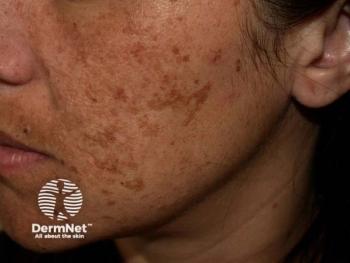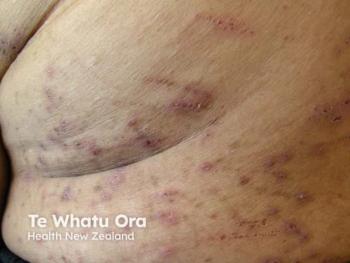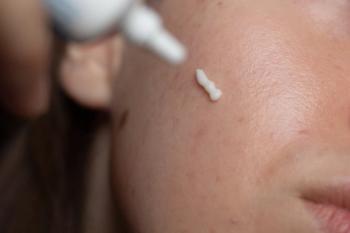
Vitiligo's Deep Impact on Life Choices
Key Takeaways
- Vitiligo affects major life decisions, notably clothing choices, social interactions, and lifestyle changes, due to its visible nature.
- Facial vitiligo significantly impacts professional life, affecting career choices, job performance, and income due to appearance-based discrimination.
Vitiligo significantly influences patients' quality of life, affecting major life decisions and increasing perceived stigma.
Vitiligo extends its impact far beyond visible skin changes, profoundly affecting patients' quality of life.1 Recent research published in Acta Dermato-Venereologica investigated this broader burden by examining the influence of vitiligo on major life-changing decisions (MLCDs) and perceived stigmatization.2 The cross-sectional study revealed that clothing choices, social interactions, and lifestyle changes were the most affected MLCDs. Researchers also found that facial vitiligo significantly exacerbated the impact on professional domains. Demographic factors such as being single, not having children, being female, and longer disease duration were associated with a higher impact on life decisions. A significant negative correlation was found between perceived stigmatization and emotional well-being, irrespective of objective disease severity.
Methods
This cross-sectional, observational study enrolled 51 patients diagnosed with vitiligo through a combination of in-person recruitment at a phototherapy unit and online surveys via a patient association. The study evaluated the impact of vitiligo on MLCDs using a 4-point Likert scale across various life domains. Perceived stigmatization was assessed using a modified, binary version of the Patient Unique Stigmatization Holistic tool in dermatology (PUSH-D), while emotional well-being was measured with the WHO-5 index. Disease severity was quantified using the SA-VASI scale.
Key Findings
The research highlighted that the most significantly affected MLCDs were those related to daily social engagement and personal presentation. Patients reported the highest impact on their clothing choices, social interactions, and lifestyle changes. This indicates that the visible nature of vitiligo often compels individuals to adapt their appearance and social behaviors to manage self-consciousness or perceived scrutiny.
A notable finding concerned the disproportionate impact of facial vitiligo. The study demonstrated a significant association between facial involvement and a greater overall lifetime impact of the disease, especially within the professional sphere. Patients with facial vitiligo experienced a more significant impact on career choice, job performance, opportunities for promotion, and even income levels. This suggests that the visibility of lesions on the face can lead to appearance-based discrimination in the workplace, limiting professional advancement and economic stability.
Furthermore, the study identified specific demographic and disease-related factors that affect this impact. Being single, not having children, being female, and having a longer disease duration were all linked to a higher impact on life decisions. For instance, women with vitiligo reported a greater impact on clothing choices, aligning with broader societal pressures on female appearance. The increased impact on social interactions among single individuals or those without children suggests that a strong social support system may serve as a buffer against the psychosocial burden of the disease.
Regarding perceived stigmatization, while the modified binary PUSH-D scale indicated relatively low reported stigma, a critical negative correlation was observed between perceived stigmatization and emotional well-being. Patients with lower emotional well-being consistently reported higher levels of perceived stigma, underscoring the direct link between the experience of stigma and mental health. Notably, this correlation between perceived stigma and emotional well-being was independent of objective disease severity. This implies that a patient's subjective experience of living with vitiligo, including their personal interpretation and social context, is a more significant determinant of their psychological distress than the physical extent of their depigmentation.
Clinical Implications
The findings from this recent research published in Acta Dermato-Venereologica carry profound implications for clinical practice. The observed discrepancies between objective clinical assessments of disease severity and patients' subjective perceptions of their condition highlight a critical need for a more comprehensive approach to patient care. Clinicians cannot solely rely on visible signs of depigmentation or repigmentation to gauge a patient's overall well-being. Instead, active inquiry into the patient's psychosocial experience, including their challenges with MLCDs and perceived stigmatization, is paramount.
The study's emphasis on the significant impact of facial vitiligo on professional life, and the heightened burden on certain demographic groups, necessitates targeted support strategies. For instance, female patients, single individuals, and those without children may benefit from enhanced psychosocial counseling or access to support networks.
Conclusion
Vitiligo profoundly affects patients' quality of life, extending its influence to major life-changing decisions and leading to significant psychosocial burdens, including stigmatization. The recent research published in Acta Dermato-Venereologicaunderscores that while medical advancements target physical repigmentation, a patient's subjective experience, particularly concerning social interactions, clothing choices, and professional life, remains a critical aspect of their well-being. The disconnect between objective severity and perceived impact, coupled with the clear link between stigma and emotional distress, necessitates a shift towards truly patient-centered care. Future research with larger, more diverse cohorts and refined assessment tools, coupled with integrated psychosocial support in clinical practice, will be essential to improve the holistic well-being and life trajectories of individuals living with vitiligo.
References
- Rosmarin D, Soliman AM, Piercy J, Marwaha S, Anderson P, Camp HS. Health-related quality of life burden among adults with vitiligo: Relationship to disease severity and disease location. Dermatol Ther (Heidelb). 2024;14(6):1633-1647. doi:10.1007/s13555-024-01187-z
- Castellano-Lopezosa L, Ureña Paniego C, Haselgruber S, Blasco-Morente G, Arias-Santiago S. Impact of vitiligo on major life-changing decisions and perceived stigmatization: A cross-sectional study. Acta Derm Venereol. 2025;105:adv44198. Published 2025 Aug 5. doi:10.2340/actadv.v105.44198
Newsletter
Like what you’re reading? Subscribe to Dermatology Times for weekly updates on therapies, innovations, and real-world practice tips.


















